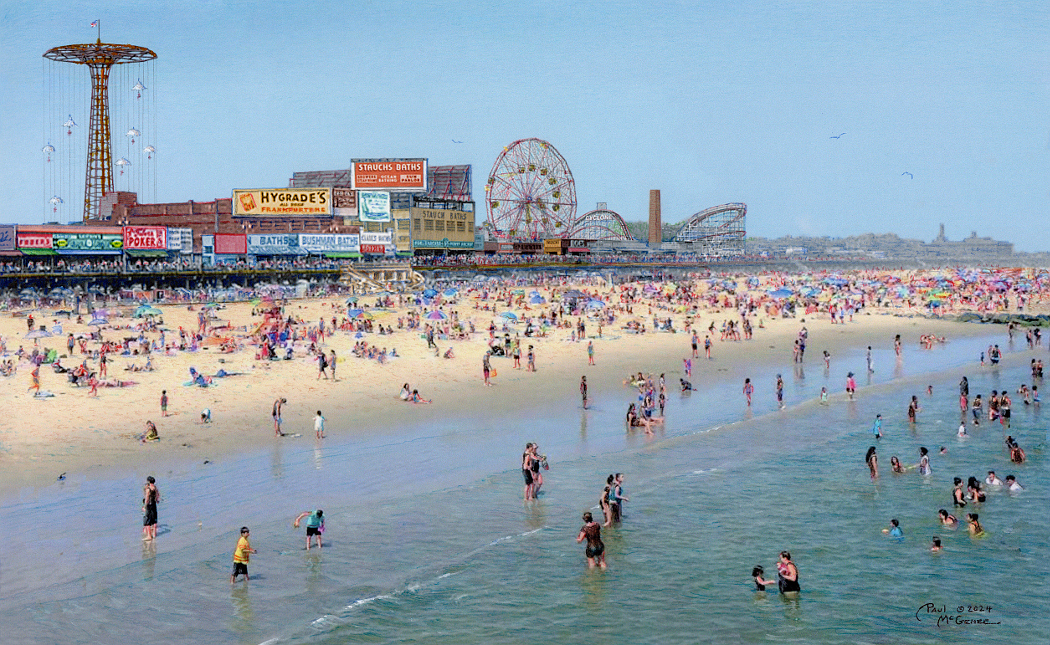|
“Coney
Island Days - 1950” by Paul McGehee. A colorful scene of the classic
beach resort located near New York City in the Borough of Brooklyn on a
sunny summer's day in 1950. Once an actual island, Coney Island was
originally separated from Brooklyn by Coney Island Creek, which was
filled in in the 1920's, turning the island into a peninsula. The name
"Coney" is thought to be a variation of the name of the local Indian
tribe which inhabited the region, called "Konoi". Because of its
proximity to New York City, it became the prime destination for city
vacationers starting in the 1830's, due to ever-improving roads and the
commencing of regular passenger steamboat runs. Coney's amusement park
was the largest in the U. S. in the years between 1880 and 1950, the
famous Luna Park was but one section of it. The famous "Wonder Wheel"
Ferris Wheel, with its unique sliding carts, first greeted riders in
the summer of 1920 and is still in operation today. The "Cyclone"
roller coaster, a wooden coaster thought by some to be one of the best
in the United States first opened in 1927 and is still in use. Coney
Island's famous "Parachute Jump" ride was originally constructed for
the New York World's Fair in 1939 in Flushing Meadows and
moved to its current location near Coney's boardwalk in 1941. Today,
though no longer operational, the "Parachute Jump" tower remains as a
protected historical landmark. Currently there are plans to revitalize
Coney Island's amusement park area and boardwalk as it remains to this
day one of the premier beach destinations of the country.
“Coney Island Days - 1950”
is faithfully reproduced as an archival-quality print from McGehee's
original color pencil and acrylic artwork, in a limited edition of only
2,000 pieces each hand-signed by the artist.
|


